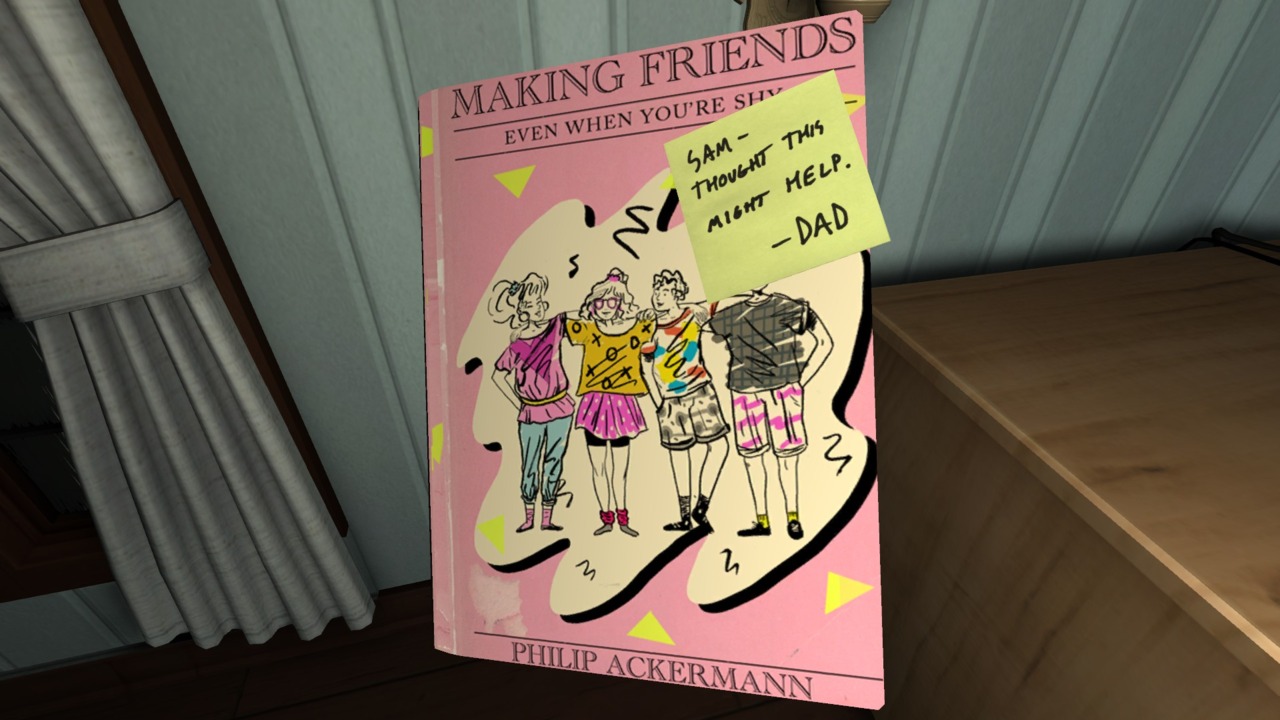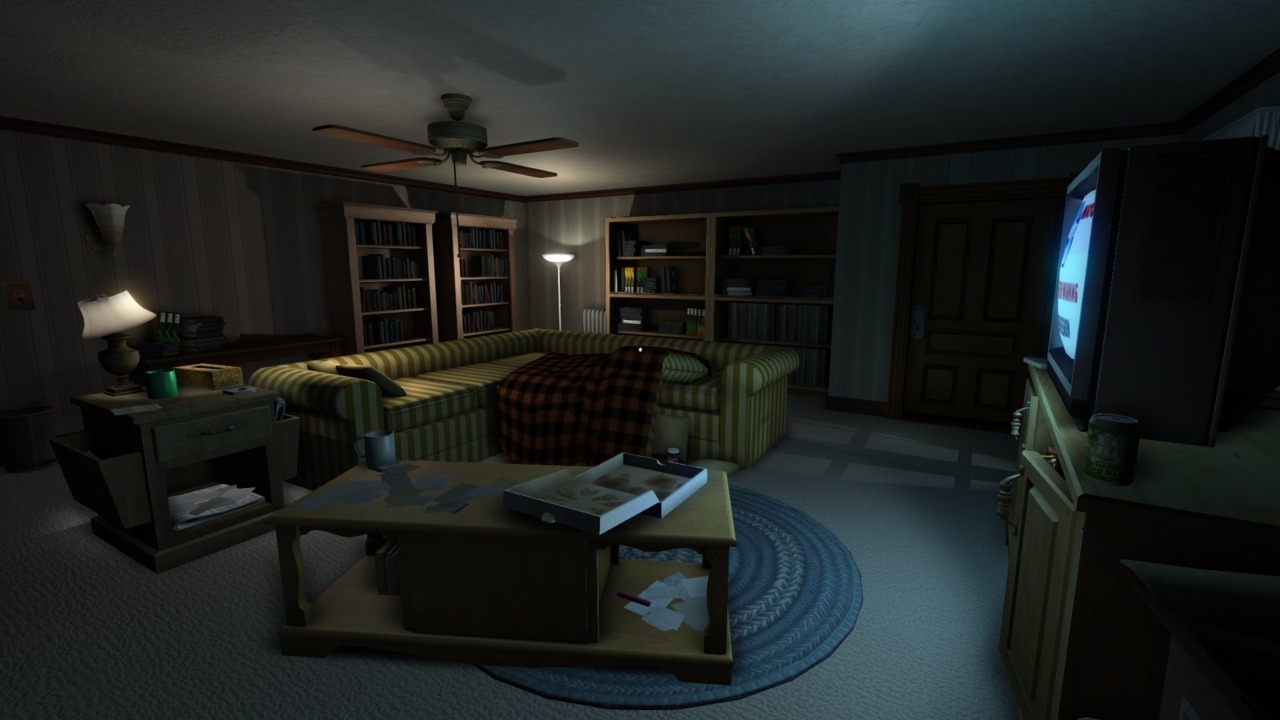The Places of Our Past: Exploring the Emotional Intimacy of Gone Home
Gone Home's remarkable sense of time and place frames a fascinating story waiting to be discovered in this upcoming exploration-based game.
Throughout my life, games have largely been a means of escape. This has been extremely valuable, even essential. Leaping through jungles with Pitfall Harry, exploring alien landscapes with Samus, living the life of a hero of destiny in the realm of Morrowind--all of these experiences enriched my life while also providing a much-needed reprieve from the complications and pain of the real world. But games don't need to be purely about escape. They don't need to let us be people with wildly different experiences from our own in worlds that are wholly foreign to us. As I played through the demo for Gone Home, an upcoming game by The Fullbright Company, I experienced something extraordinary. The game wasn't just allowing me to be someone else; it was illuminating parts of myself.
Another Crab's Treasure Is A Soulslike 3D Platformer | GameSpot Review Stellar Blade Review Nintendo 64 – April 2024 Game Updates – Nintendo Switch Online Super Monkey Ball Banana Rumble - Official Multiplayer Features Trailer PUBG | Erangel Classic Returns Gori: Cuddly Carnage | Meow Launch Date Announcement Trailer Genshin Impact - "Arlecchino: Afterglow of Calamity" | Collected Miscellany Marvel Rivals - Official Loki Character Reveal Trailer | The King of Yggsgard Fortnite Festival - Official Billie Eilish Cinematic Season 3 Trailer Remnant 2 - The Forgotten Kingdom | DLC Launch Trailer Stellar Blade - Official "The Journey: Part 2" Behind The Scenes Trailer | PS5 Games Dead by Daylight | Tome 19: Splendor | Reveal Trailer
Please enter your date of birth to view this video
By clicking 'enter', you agree to GameSpot's
Terms of Use and Privacy Policy
Of course, you do play as someone else in Gone Home: Kaitlin Greenbriar, a 20-year-old who returns from travels in Europe to arrive late one night in 1995 at her family's new Oregon home. But though you get a sense of Kaitlin's personality through voicemail messages and postcards that she sent her family from Europe, Gone Home doesn't really seem to be Kaitlin's story. Instead, through her eyes, you uncover the stories of the people who have been living in that house.
Gone Home's re-creation of a home in 1995 goes so much deeper than the sorts of obvious things you might expect--the magazines memorializing Kurt Cobain and the VHS tapes of X-Files episodes.
Your family, for reasons that aren't immediately clear, isn't there; you find the house abandoned, but feeling as if people were there recently. In one room, for instance, a TV has been left on, broadcasting severe weather warnings. Exploring the house, you discover so many details that give you a sense of the lives of the people who inhabit it, but no details are as prominent and captivating as those about your younger sister, Sam.
Maybe for some people, making friends is easy. Maybe it comes naturally. But for others, the process behind it can be baffling, the potential of being ignored or rejected or mocked terrifying. Through Sam's journals, we come to understand how she feels like an outsider at her new school, and how she's never felt like she fit in with other girls. The way these journal entries are written, though, doesn't just dryly convey information about Sam's personality and struggles. It brings those struggles to such vivid life that they transported me back to my own teens, and will, I expect, strike a chord with anyone who ever felt like an outsider during adolescence.
Of course, when it comes to Gone Home stirring up my own memories, it helps that the game not only takes place during the mid-'90s, but evokes the era so accurately that playing it feels like using a time machine. Sam usually finds it hard to make friends, but is drawn to a classmate named Lonnie, who hangs out at a nearby 7-Eleven after school playing Street Fighter II. That's a detail that practically could have been lifted right from my own life. And Gone Home's re-creation of a home in 1995 goes so much deeper than the sorts of obvious things you might expect--the magazines memorializing Kurt Cobain and the VHS tapes of X-Files episodes. A poster in Sam's room advertising a music festival at which artists like Lisa Loeb, Juliana Hatfield, and the Mighty Mighty Bosstones were playing tuned my brain right back in to the mid-'90s airwaves of Los Angeles' once-great alternative rock station, KROQ. And I admit, I spent a good 30 seconds unfocusing my eyes just to see the three-dimensional image hidden in a stereogram in Sam's room, something I haven't done since the '90s.
Making these details convincing is tremendously important to Gone Home's success, since it's a game entirely about exploration and discovery, about the ways in which the things you find inform your understanding of the Greenbriars' lives. And on their website, the Fullbright team has been refreshingly open about the kinds of research it has done and the work it has put into creating those objects that help root Gone Home in the mid-'90s. In this post, for instance, Fullbright's Karla Zimonja discusses the research she has put into making the music magazines you find in the game seem authentic. The site is chock-full of great content for anyone interested in how rich, convincing worlds are created in games.
Members of the Fullbright team have some experience creating such worlds. Some of them worked previously on BioShock 2's widely praised downloadable add-on, Minerva's Den, among other things, and it's clear that some of the skills that helped to create a captivating tale set in the underwater city of Rapture also apply to the creation of one set in a house in Oregon. But although you hear Sam's journal entries in much the same way you hear audio diaries in a BioShock game, I found the experience of earning each one in Gone Home's first act moving in a way that Rapture's audio diaries never were.
That's partially because the game is focused completely on environmental discovery. Absent anything like the combat of the BioShock games, the puzzles of the Myst games, or any traditional game mechanics that captivating environments in games often exist to support, the environment itself, and the story it tells, can pull you in completely. The notes you find that Sam and Lonnie have passed to each other between classes are alive with details--doodles, believable misspellings, and the like--that make you feel as if you are witnessing a real friendship develop. And it feels all the more real because the house you discover them in feels more like an actual place than a typical video game location with typical video game things to do.
The notes you find that Sam and Lonnie have passed to each other between classes are alive with details that make you feel as if you are witnessing a real friendship develop.Of course, it doesn't hurt that Gone Home resonates so strongly with my own memories. But if that first act is any indication, Gone Home's story might be so well crafted that it will hit home not just with people who were in high school in the '90s, but with anyone who has ever felt like a bit of an outsider, anyone who has experienced the electric, slightly scary intimacy of really opening yourself up to another person for the first time.
Yes, it might help if you've ever made a mix tape for someone, if you understand how a collection of songs with a handwritten label can be a way of revealing yourself to someone else and communicating feelings without quite saying the words. But you don't need to have slipped a note into someone's locker or practiced Street Fighter II just to have an excuse to hang out with someone to understand what Sam is feeling as she does these things. What's remarkable about Gone Home isn't just its breathtaking richness of environmental detail, nor that it seems poised to be that rare game that tells a touching story about complex, believable characters. What's remarkable about it is that it demonstrates, with confidence and grace, that games can make exploring places that are believably rooted in our own world as rewarding as exploring any imagined realm, and that there's as much to be discovered in our own emotional histories as there is within the grandest fantasy kingdom.
'Got a news tip or want to contact us directly? Email news@gamespot.com


Join the conversation